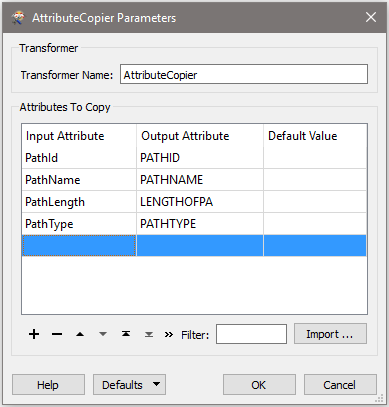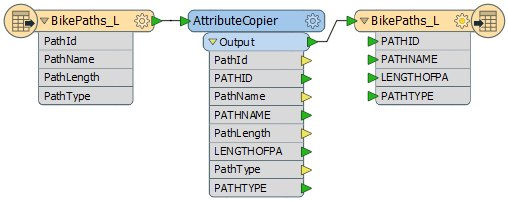You can replace manual attribute connections with an AttributeCopier transformer. In this example, FME doesn’t connect the attributes because either the case is different or the name is different.

If you right-click on the existing connection and choose Auto Connect Attributes, FME will guess at the connections, connecting the attributes where only the case is different.

PathLength is not automatically connected to LENGTHOFPA, as the two names are too different for an automatic match. You would need to connect such an attribute manually.
However, with the above method, if the feature connection is deleted or replaced, the attribute mapping is lost and will have to be redone.
Instead, using an AttributeCopier to map the connections will keep the pairs persistently through changes to the workspace.

And the changes are reflected in the transformer:




 beside the applicable parameter. For more information, see
beside the applicable parameter. For more information, see